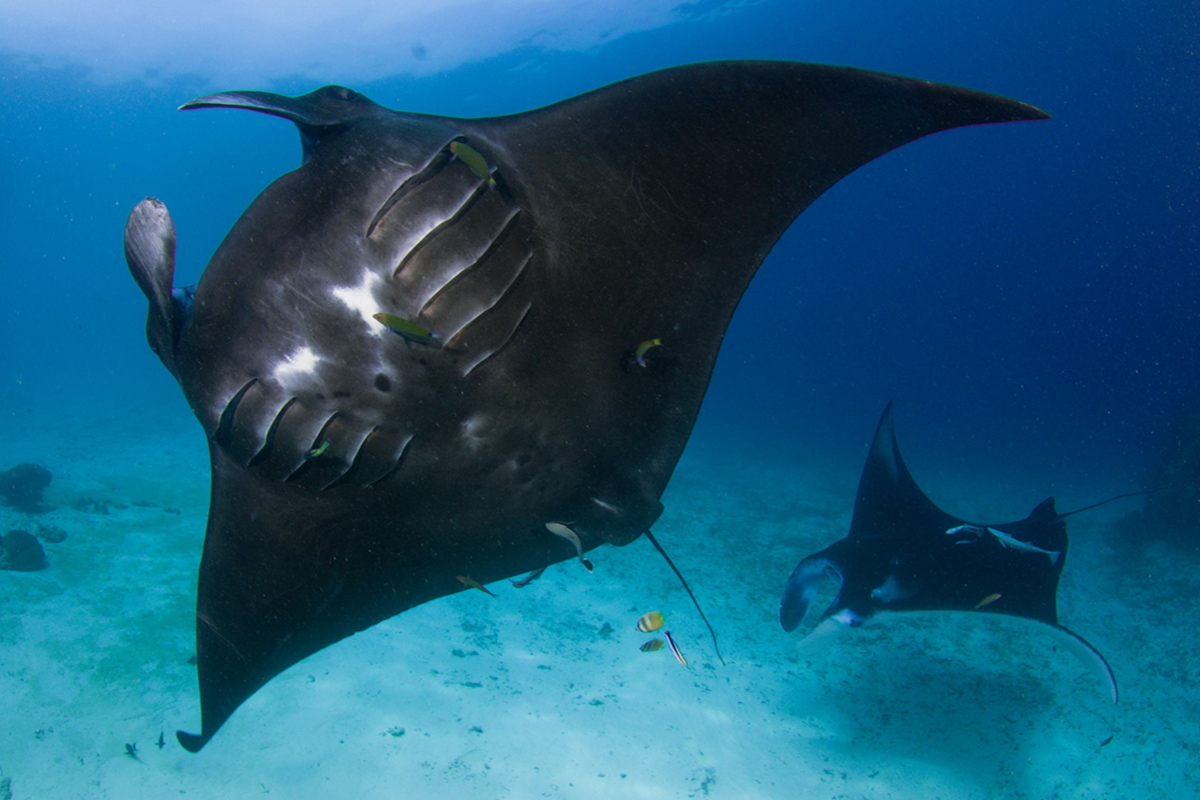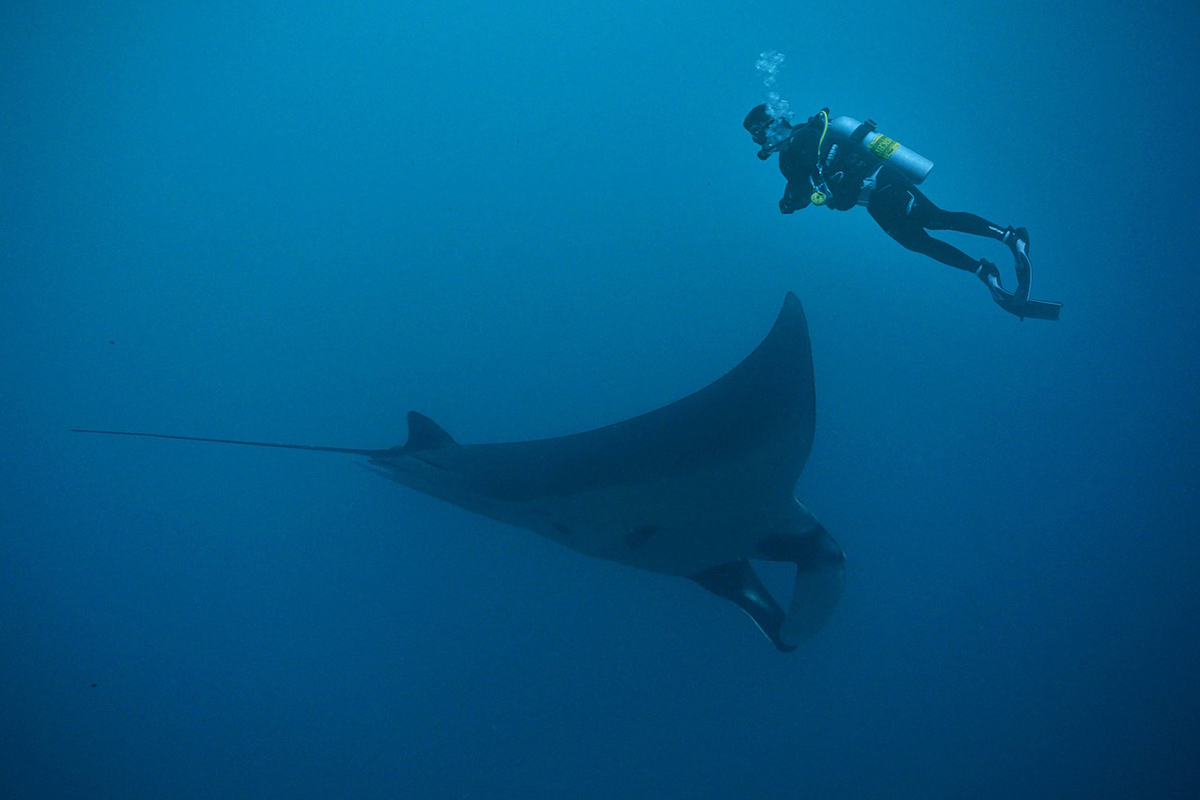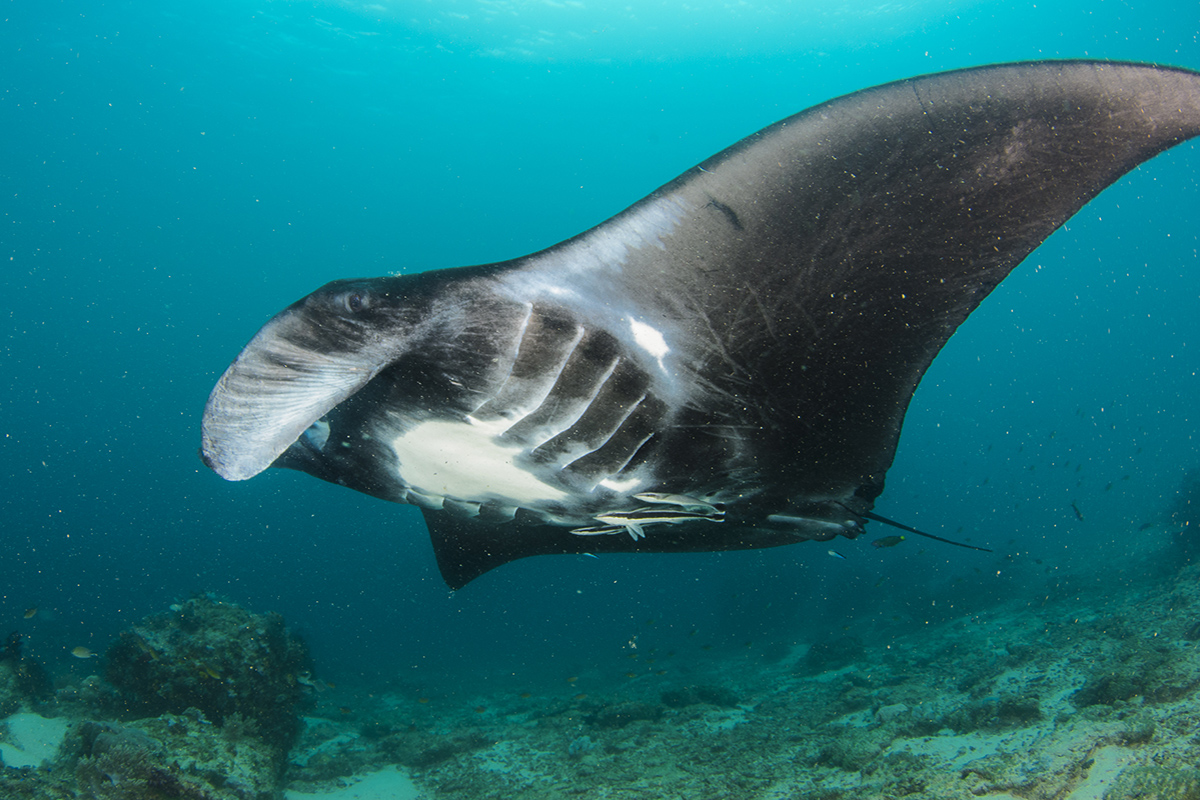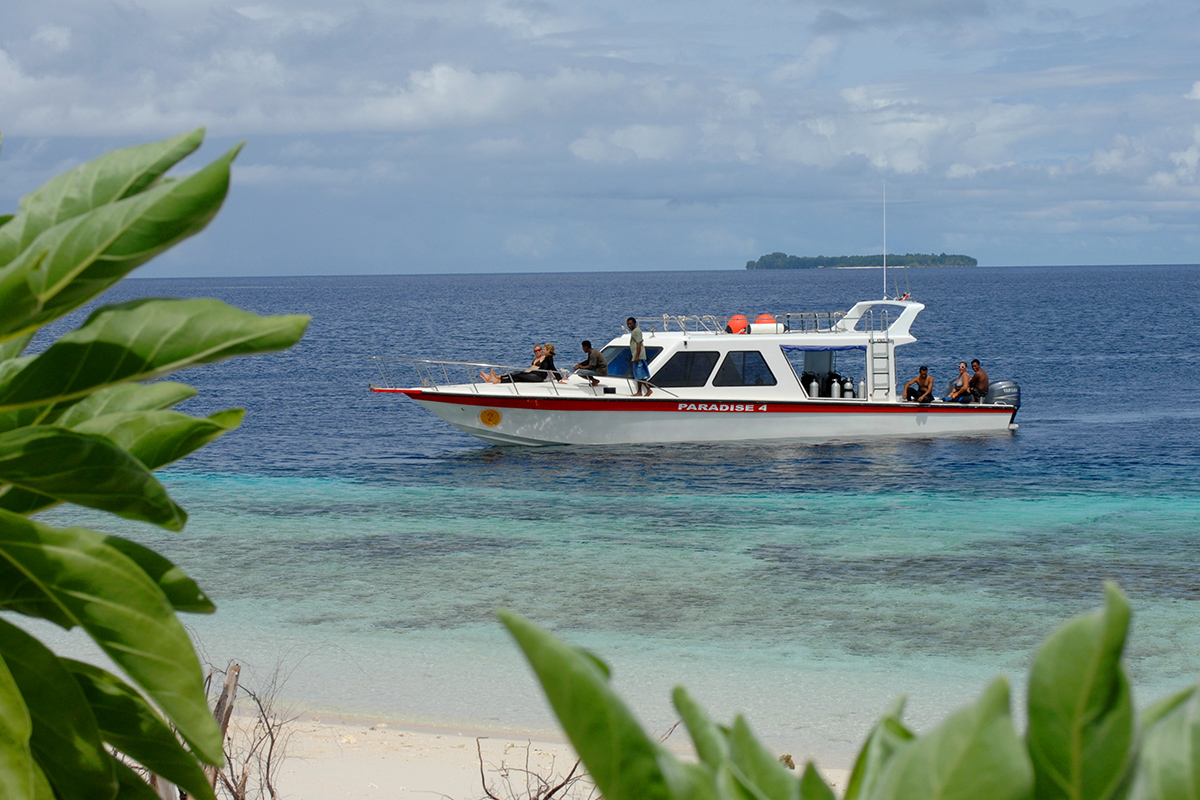Looking for Rays? Dive Raja Ampat!
Raja Ampat is famous for its rich marine biodiversity where 75% of the world’s marine species have been found. There are many species that divers hope to spot while diving in Raja Ampat, but rays are some of the most sought after.
Diving with rays is a majestic feeling. The way they glide through the water with grace and precision is like nothing you’ve ever seen before. Their size is also incredible and can make you feel totally awestruck.
When Indonesia’s first Shark and Ray Sanctuary was formed in 2013 it became prohibited to fish for them across and area of 46000 km². This is an incredible achievement and means that there are more rays to spot in the area than ever.
Reef Manta Rays
Manta Rays are one of the species on everyone’s lips when they dive in Indonesia. They can be found in Bali, Flores and around Raja Ampat. However, those found in Raja Ampat are very unique. Most reef Mantas are dark on the top and light on the bottom, but those in Raja Ampat are dark on both sides. They are therefore called Black Mantas.
The best time to see Black Mantas is between the end of the year (late October at the earliest) and April when they migrate to the area in large numbers. At this time of the year they are attracted by a high concentration of nutrients and plankton. They are spotted year-round, but it’s not uncommon to see them leaping above the surface of the water when the plankton is in abundance.
Papua Paradise has a local Manta spot, which is a manta cleaning and feeding station just 15 minutes away from the resort. It is much quieter than Manta Sandy, where you might be able to see Mantas earlier in the season, but with more divers around.
Both dive spots offer a real spectacle. The Mantas head here to be cleaned by the small wrasse that feeds on parasites. Manta Ray car washes if you will…
For more information on diving Manta Sandy click HERE.
Oceanic Manta Rays
Oceanic Mantas are lesser in numbers but are also found in Raja Ampat. These mantas are much bigger than their reef-dwelling relatives, growing up to 7 meters wide. A fully-grown oceanic manta can weigh up to 2 metric tons!
You will be able to tell these Mantas from their size, but also their white or spotted underside.
Oceanic Mantas tend to stay out in deeper water sites like Blue Magic and Magic Mountain, but can be seen getting cleaned up at Manta Sandy as well.
Devil Rays
Apart from Manta Rays, Raja Ampat is also home to the unique Devil Ray.
Devil Rays can be identified by their large body disc, white underside, dark brown, bluish or black upper, long slender tail with no spine, and large pectoral fins that extend past the head. They are sometimes also known as Flying Rays due to their propensity for breaching, sometimes in a spectacular manner.
Devil Rays are social animals and travel in schools; often spotted in groups of six. They are commonly seen between Friween and Gam Island between the months of October and April.
Diving With Rays
Rays are very peaceful creatures with very few natural enemies, so they don’t fear divers. This means you can get quite close to them and watch them very close up unlike many other marine creatures of this size.
Of course, you must respect their space and never corner or frighten them, but diving with rays is a calming experience. Once you get over their size and beauty, you will feel like you’re swimming with friends. You may also find that fish and other marine species are calmed by the presence of rays and will hang around longer for you to see them.
Diving with Rays and Gangga Divers at Papua Paradise
The dive professionals at Gangga Divers at Papua Paradise Eco Resort know exactly where to take you to find rays. They know their species and will also instruct you on how to behave in the water to get the best out of your diving experience.
Are you interested in diving with rays in Raja Ampat? (How could you not be now?) Leave us a question or comment below about how you can make a trip to dive with rays a reality.





2 Comments
Hi, we are booked to come Papua Paradise in August, from the 16th to the 23rd. What are chances of seeing mantas at this time of year?
Hi. What is the best time to visit to see migration of Ray’s? Also, can children dive in this spot?